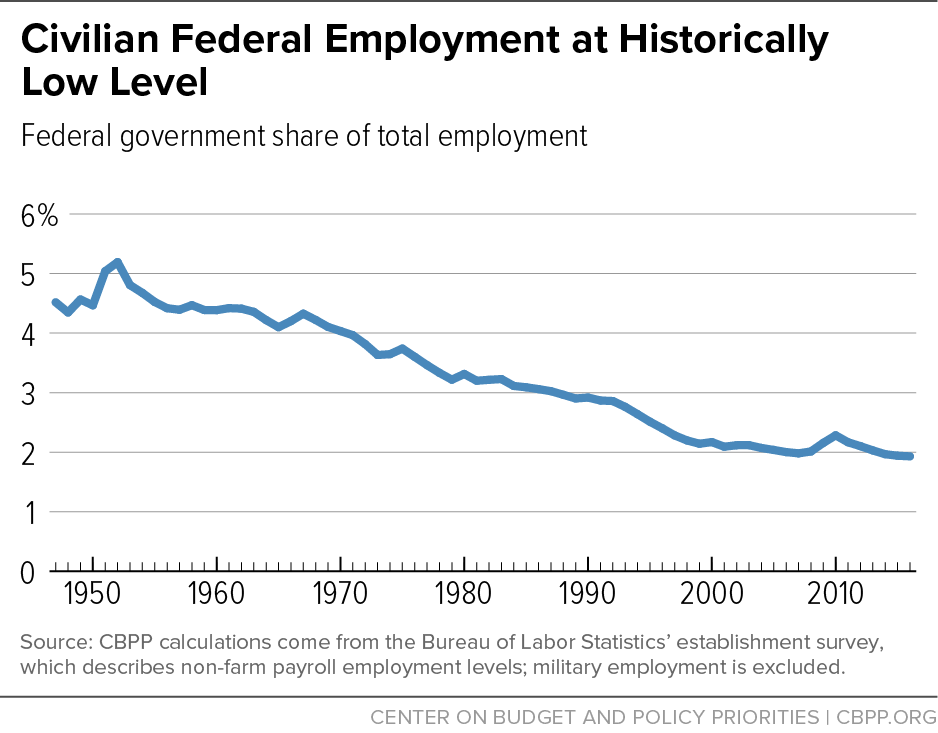BEYOND THE NUMBERS
Trump Plans Big Federal Workforce Cuts, But Workforce Already at Record Lows, Undermining Basic Services
President Trump plans to propose large cuts in the number of federal employees, news reports suggest, even though federal employment already equals its lowest level ever recorded (both as a share of all employment and as a share of the population) and even though personnel shortages already are weakening basic governmental services.
Federal civilian employment has hovered around 2.8 million for two decades, Labor Department data show, which is down from the two decades before that. Meanwhile, the population continues to grow, adding demands on the federal government and its employees to provide basic government services.
Measured relative to general benchmarks of size, Labor Department data show that in 2016:
- Federal employees represented only 1.9 percent of the nation’s 144 million civilian jobs. That ties with 2015 for the lowest federal share ever recorded, with data going back to 1939, and it’s far below its post-World War II average of 3.3 percent. (See figure below.)
- Similarly, the number of federal jobs as a share of the nation’s population in 2016 was tied with 2014 and 2015 for its lowest share on record.
Some assert that rising state and local government employment has replaced shrinking federal employment. The data suggest otherwise. In 2016, state and local jobs each hit their lowest shares of overall employment in several decades (though not the lowest on record). As a result, the combined share of civilian employees at all levels of government in 2016 fell to its lowest level since 1959.
As separate papers we issued today show, basic governmental functions — such as administering the nation’s Social Security and tax systems — are already being performed inadequately due to a lack of personnel. Social Security Administration staff cuts have significantly eroded basic services to Social Security recipients and IRS staffing cuts have negatively influenced taxpayer services and cybersecurity efforts and hindered enforcement efforts aimed at limiting tax evasion. In these areas, we need more staff, not fewer.
To be sure, there may be areas where the same or even fewer federal employees can provide government services efficiently. But, overall, federal employment trends and the employment-related problems that government faces delivering essential services indicate that the President’s reported direction on federal employment is misguided.

